A Virtual Art Trip Through South America
Part 1 – South American Art Highlights
Last week was a year since we returned from South America and this coming Saturday – February the 15th – we’re celebrating the two years anniversary of the start of what turned out to be a trip of fifty weeks across the vast South American continent. The 4th of February 2013 we landed at Amsterdam’s Schiphol and just like that we actually had to start readjusting to “normal life” again. What we had left behind us in South America turned into memories. Readjustment is hard work, everyone who’s been out in the world on long-term travels can testify to this: perspectives change, priorities diverge. The world simply ends up looking differently from what you remembered.
On the other hand, our fifty weeks on the road in South America gave us a lot. We’ve learned loads, about the world, each other, and ourselves. The coming days, therefore, as a tribute to the memories, we’ll focus on what we came across over those 40,000 kilometers we’ve spent on the road (in case you wonder, that’s the length of the Equator, more or less). To be aligned with the theme of Art Weekenders in this recap we’ll put some extra focus on the cultural aspects of the continent, covering the highlights from south to north, split across thirteen countries of the continent. There’s a lot that can be said, therefore we decided to divide it up into three articles, starting from the south, just as we did, with Argentina, Chile, Uruguay and Paraguay. Tomorrow a new batch of non-Spanish speaking countries further north will follow, to finally round it all off with the remaining Andean nations.

READ MORE: South America through the arts Part 2; Brazil and the Guyanas
AND MORE: Part 3 of the South American journey through the arts: The northern Andean countries
South America is a vast continent. Still, often there are references made to this something called a Latin-American culture. This is probably due to the linguistic ties between most of the countries and, of course, highly related to the colonial heritage. Travelling through the continent you will often come across these similarities, but at the same time, it’s also very obvious that the differences are huge, often within the same country just as much as in between them. Thus, having an article summarizing all the cultural traits of all the nations from the continent is certainly not realistic, and that’s not the goal here either, rather an opportunity to highlight some great aspects from each country, especially from an art perspective.
What do we mean by art here, you might wonder? Well, for the sake of simplicity we stay away from indigenous cultures now, that theme deserves its own specific spot. Instead, we’ll focus on art as we know from our more modern perspective, with a Westernised twist to it.
Chile – Art from Street Walls to the Fine Galleries
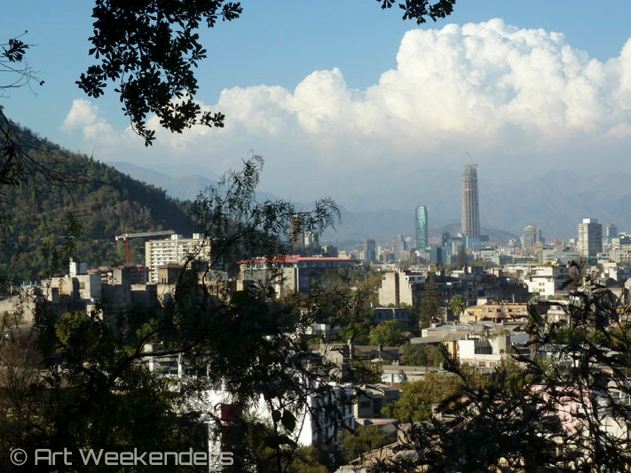
View over Santiago de Chile, Chile.
The green south of the country we’ll leave aside here: it’s simply too breathtaking, but while nature creates spectacular art it’s outside the purpose of this article. The north is a similar story but here the colour will be the brown and yellow of the Atacama desert – also stunning, but for a different post. So we’re left with ‘just” the centre, dominated by Santiago and Valparaiso. But trust us, it’ll be enough to satisfy your cultural needs.
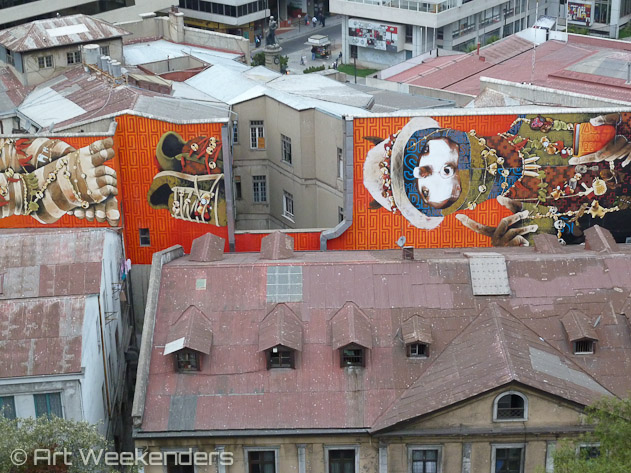
Street art, Valparaiso, Chile.
Santiago, nestled in the valley between two mountain chains of this already narrow country, is a modern, cosmopolitan and very pleasant city. For the ‘culturally active’ traveller the opportunities are numerous. Be it climbing the Cerro Santa Lucia or the even taller Cerro San Cristóbal, it’s not only the view that will be fascinating, but also the things you see along the routes. There are many museums, where likely the Fine Arts Museum and the Pre-Colombian Arts Museum will be the two grabbing most of your attention. Chile also has Pablo Neruda, the continent’s biggest poet: he has left a few houses behind in and around Santiago (‘La Ciascona’ in the capital is one, ‘Isla Negra’ in this most fantastic seafront setting right outside Valparaiso another, and a house with great views in Valparaiso itself) which shows proof of a character to admire and love.
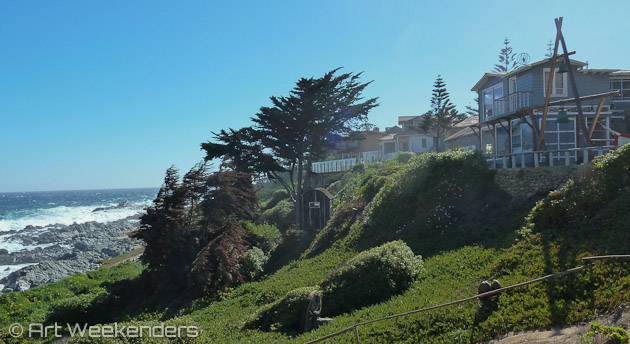
House of Pablo Neruda in Isla Negra, Chile.
Along the coast we find this city of wonders: Valparaiso. The city that had its boom in the decades before the Panama Canal opened is something very unique. Trust us, it really is. Unlike the rest of Chile, this place feels very ‘Latino’ – in the sense that it’s very lively, loud and yes, let’s be honest, chaotic and here and there right out dirty. But: this is a place with character. Houses are colourful, street art is encouraged and popping up everywhere, and buildings remind you of a glorious past. On the dramatic hillside you’ll find the old-fashioned elevators, which were once upon a time built to connect the lower and upper part of the city. Up on one of the hill you’ll find the famous ‘Paseo Gervasoni‘ and the open air museum – ‘Museo al Cielo Abierto’. But really, it’s all about walking around, strolling and getting lost – but, pst, be on your watch, it’s a harbour town with some “characters” you might prefer to avoid on a dark street.
Argentina – Culture Between the Andes and the Pampas
The land of the tango and of the parrillada – to use two well-founded clichés – is likely the part of the continent with the most European feel to it. At the same time, it’s also such a big country that it’s a mistake generalizing too much. The Andean north is vastly different from the Patagonian lifestyle in the south, not to mention the contrast to the capital Buenos Aires. Also some other cities like Córdoba have a modern cosmopolitan vibe, and a city like Salta can surprise you with an Andean sophistication you might not expect, with art galleries and a seemingly booming artistic and art-centered lifestyle.
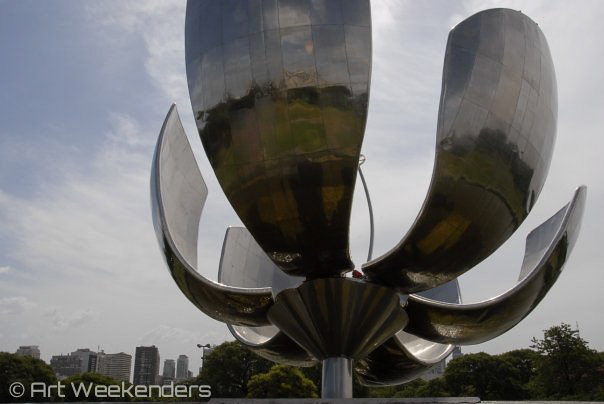
Steel Flower sculpture in Recoleta, Buenos Aires.
The art scene of Buenos Aires is highly reminiscent to one of a European city. The well-known neighbourhoods of Recoleta and Palermo host many art galleries and some museums of the highest standard, such as the well known the Latin American Art Museum MACBA, which is likely one of the top three museums on the entire continent. Buenos Aires also has the famous “Teatro Colón’, one of the best recoginisable public buildings in Argentina, where Evita Peron waved happily to the crowds in the Argentinian ‘golden years’ of the fifties. In the capital you’ll further find the ‘El Ateneo’ bookstore, which constantly ends up being ranked as one of the most beautifully designed bookstores in the world. Córdoba, the second most important city in the country is more relaxed, but somehow it has also been the force to count on in Argentina over many centuries for the progression of the political and even cultural life. So even today, with many high-profile museums and a steady buzz – thanks to its highly active student life – the contrasts to its old Jesuit and revolutionary traditions makes it an interesting hub for any traveller.
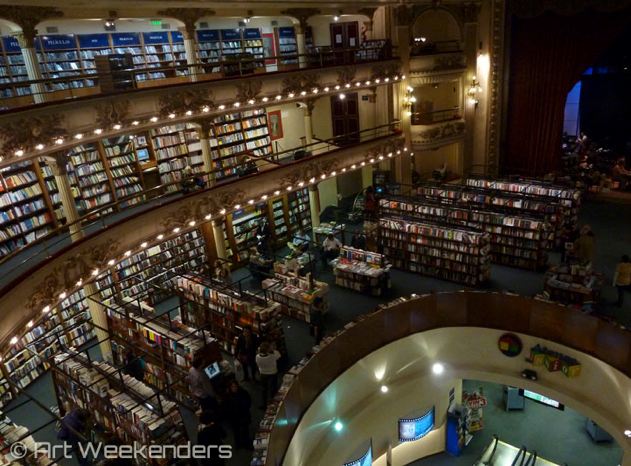
El Ateneo, Buenos Aires
Uruguay – The Cultured but Forgotten Mate-Drinking Heaven
Across the River Plate from Buenos Aires lies the Switzerland of South America: Uruguay. That comparison might be logical from a size and financial stability point of view, but otherwise this small nation sandwiched between the two neighbouring giants, Argentina and Brazil, remains easily forgotten. It’d be a shame though, because it’s a fantastic little country. Maybe it’s not naturally spectacular as the rest of the continent – although the long stretch of beaches can rival most on the continent – but filled with nice people and some of the most progressive policy-thinking in Latin America (no, we’re not only thinking about the legalisation of weed).
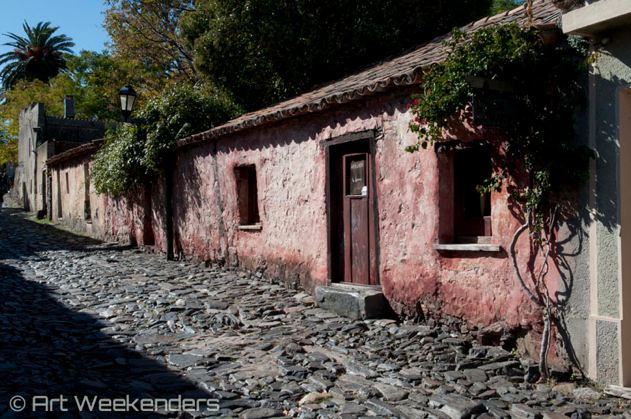
Colonia del Sacramento, Uruguay.
Being small is an advantage here: you can cover most of the country in a short period. When you are looking for the fine arts, you might just as well spend your time in between Colonia de Sacramento and the capital, Montevideo. Colonia is easily one of the prettiest little towns around, with all the white-painted colonial houses, which make it very idyllic. You won’t be the only one who’s noticed this: tourism is booming here, be it ‘porteños’ (the proud inhabitants of the Argentinian capital) from across the river, or expats who pop over for the day to avoid overstaying their visa, or more and more international visitors. The attraction is only increasing.
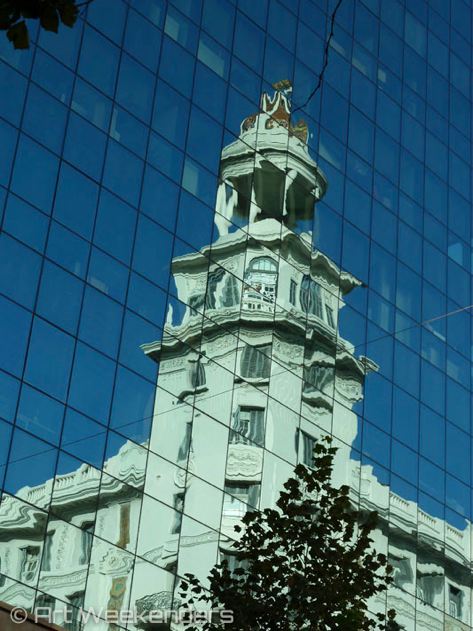
Reflection of architectural styles, Montevideo.
Montevideo on the other hand is a different kind of surprise: here you’ll find the modern mixed with the old (donkey-pulled carts racing through the main square? Absolutely). The contrasts between rich and poor are pretty obvious, which might come as a surprise. The Ciudad Vieja is for instance quite ran down, but also very atmospheric. If you’re looking for art, your best bet will be ‘El Museo Nacional de Artes Visuales’, but there are some more good quality art centres. And then, of course, you won’t have a better chance for admiring the art of the ‘mate‘ anywhere else in the world – no, actually not even in Argentina. In Uruguay its close to religious worshipping of the ‘bomba‘.

Street carts, Montevideo.
Paraguay – The Mystery of the island Surrounded by Land
Not many people end up in Paraguay, that’s just a fact. The country isn’t on many travellers’ maps, because let’s face it, it’s not the easiest country to come to. It’s not for nothing called the “island surrounded by land”: there’s simply not many entry points. A good part of Paraguay is covered by the grim ‘El Chaco’, often referred to as the “Green Hell”. Thus, it will not come as a surprise that most travellers think twice before coming to the country. But if you do, you’re in for a different experience.

Asuncion
Paraguay is a country filled to the brim with mysteries, a history that is bewildering and filled with crazy characters and a nature which is often impenetrable: no wonder that just some twenty years ago they still found a tribe that was rumoured to practice cannibalism. Putting all sensationalism aside, this is a country unlike the rest of the continent. The guaraní culture is still dominating almost everywhere, except in the bigger cities, and cultural life – that is, of western standards, is pretty much restricted to the Jesuit missions in the south and to the capital Asuncion. But even then, don’t expect much in ways of artistic experiences, we’ll be honest about that.

Market stall with mate bottles and cups, Asuncion.
For a capital city, Asuncion is fairly sleepy, but pleasant in its special quirky ways. You’ll be able to walk around it easily in a day or two and while coming across some good examples of fine colonial architecture and some street art, the rest of the experience will be mainly filled with some quiet wondering about the strange faith of this country. If you’d like to get a good grab of the nature of the Paraguayan psyche, a great book that will take you through it is John Gimlette‘s At The Tomb Of The Inflatable Pig: Travels through Paraguay highly recommended. For the best art experience in town you should head to the Museo del Barrio, an interesting collection that holds the key to Paraguayan culture of a very wide range, and it’s totally free (but tricky to find, take a cab). There’s also the Museum of Fine Arts that has a nice but fairly small collection.
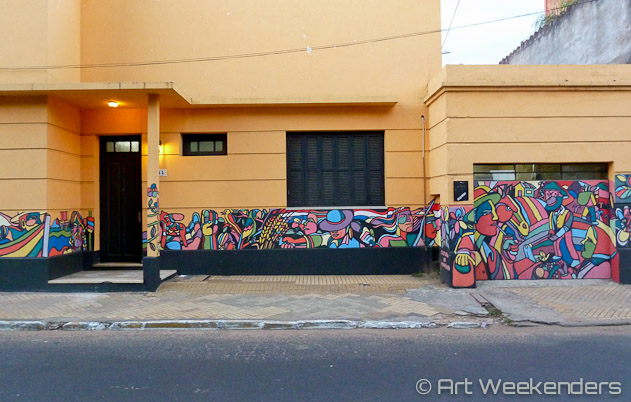
Hostal El Jardin, Asuncion.
In ‘Part 2’ of our journey through the South American art highlights, we will take a closer look at the giant of the continent, Brazil, and the three Guyanas up in the forgotten northern corner of the continent. The common theme is that they’re not Spanish-speakers, but there’s way more to these countries to talk about.
If you enjoyed this post, we would be delighted to see you back. Please subscribe to our weekly newsletter or follow us on your preferred social media channel: Facebook, Twitter or Google Plus. Gracias.
- South American Art Highlights – Part 2: Brazil, French Guiana, Suriname, Guyana
- South American Art Highlights – Part 3: Colombia, Ecuador, Peru, Bolivia, Venezuela
